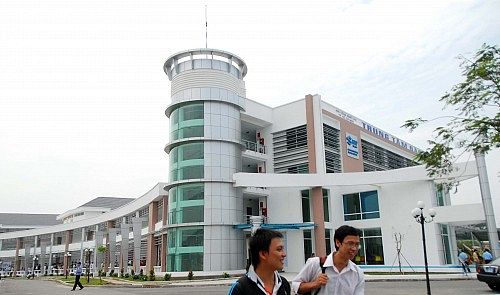Are the sharks all to blame, or should other aquatic creatures also be held responsible for Vietnam’s sluggish internet?
Vietnam is no stranger to submarine internet cable breakages: this year alone, the country’s cables at the bottom of the East Sea have broken five times, in January, February, August, October and November. The most recent issue still hasn’t been resolved, and internet service providers (ISPs) are unsure when local connections will return to normal.
In a recent series on Vietnam’s 20-year journey with the internet, Tuoi Tre looked into the obscure process behind how local ISPs carry out maintenance and repairs on submarine cables. For technicians from the country’s largest ISPs, breakages have lost the surprise element as they’re now “used to all the problems” and have put in place backup procedures in case of an outage.
Much of Vietnam’s data goes through three major undersea fiber optic cables to reach the global network: the Asia-America Gateway (AAG), the Intra-Asia cable (IA) and the Asia-Pacific Gateway (APG). The first two were installed in 2009 while the APG became operational starting in 2016.

The remotely operated vehicle (ROV) that's used to repair undersea cables. Photo via Wired.
By the end of 2016, the country’s international bandwidth speed had reached 3.8 terabytes per second – 38 times faster than before the AAG was installed.
General Director of FPT Telecom Nguyen Van Khoa told Tuoi Tre that there are many reasons behind the numerous breakages of the undersea cable network, including weather, marine traffic and seismic activity.
According to experts, the stretch of ocean between Vietnam and Singapore is home to busy shipping routes frequently utilized by heavy freighters and fishing boats. Thus the cables have to endure anchors being dropped and dragged over them on a daily basis.
Vietnam’s coastal area is also prone to tropical storms, such as the recent Damrey and Kirogi, which can wreak havoc on the cable network.
Of course, at times, these internet outages can also be caused by human factors. In 2007, the Thailand-Vietnam-Hong Kong (TVH) cable malfunctioned, rendering much of Vietnam’s network sluggish for months. The cause: a gang of local pirates stole 98 kilometers of cables and a repeater to resell as ve chai. The repair cost US$1.3 million, a quarter of which came out of VNPT’s pocket. The thieves were also sentenced to 12 years in prison for the heist.
In other cases, the control station in the impacted locality will identify the cut’s location and inform the system operators, who will order a cable repair vessel to book a repair date. Each of these stages usually takes one day.
Depending on which country the cable break is nearest, the repair ship and cable operator will then send a document to its government seeking access to carry out repairs. Getting permission often takes a week, while traveling to the location can take the vessel from three to four days.
The actual repair work is a collaborative effort between divers and submersible robots. The former stabilizes the rupture while a the latter grabs the two broken ends and moves them to the surface to be welded back together. This usually takes three to four days. The submersible will then return the cable to its original location and bury it.
Oops, that's not a fish! A shark is caught on tape gnawing on a cable section. Video via YouTube user sudmike.
This entire process ranges from three weeks to a month, depending on the severity of the rupture and weather conditions.
It has become something of a running gag in Vietnam that curious sharks are behind these internet “attacks,” however, there has never been any concrete evidence proving this conjecture. Nonetheless, tech giant Google seems to buy into the theory: in 2014, a product manager from the firm revealed that his company was taking measures – such as covering the fiber with a Kevlar-like material – to protect cables from sharks.
The Guardian also purported that these curious hunters are attracted to the magnetic field created by the high voltage going through the cables, in the same way their natural 'radar' detects voltage emitted by fish.
Frequent breakages are not a problem unique to Asia-Pacific, the new sources claims, noting that cables in the Atlantic Ocean also require some 50 repairs annually due to an array of reasons, including fishing trawlers to anchors and earthquakes.
[Photo via WordPress user Messersmith]














